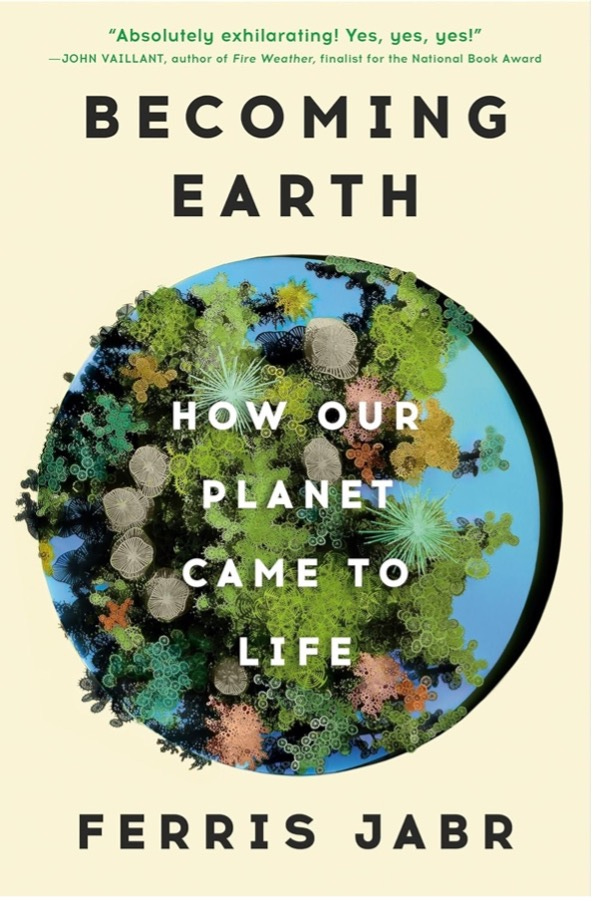Tl;dr – A solid popular science book on the interdependence between life and non-life on planet Earth. Wide ranging content but not a deep dive into any particular area of science. Accessible read for those new to ecology and Earth science.
The Earth is a dynamic system. But is it alive? Considering there is no agreed upon definition of what life is, the answer could presumably go both ways, depending on what definition you use or from what angle you look at it.
For Ferris Jabr, the answer is “yes,” as he explains in his book Becoming Earth: How Our Planet Came to Life. He sees the Earth and its life as a giant feedback loop. Whereas it’s been long recognized that the environment influences the evolution of life, less considered is that life also influences the planet. As he continued to study the interdependence of earth and life, he became convinced of the view that Earth itself is, in fact, alive.
Jabr frames his book around the Gaia hypothesis: that all elements of Earth, whether animate or inanimate, are part of a system that as a whole can be considered alive. I’ll admit, I never heard of this hypothesis before, which was intriguing. But I also think that the idea can also be more simply thought of as a “dynamic system” – though, this is much less interesting from a book marketing perspective.
Anywho, the basic idea is that animate and intimate things on Earth can impact the trajectory of other things. This isn’t surprising to me as someone who studies evolution. It’s pretty basic that nonlife, say a geographic feature like a river, can impact the evolution of, say, an animal. It’s also not unusual to think of life, say beavers, impacting the geology of their environment by creating vast wetlands from damming a river. Or a river impacting the land by creating a canyon, which then impacts the life that evolves within and around it. Or us humans greatly changing countless aspects of the Earth by our existence and exploitation of the planet. On and on.
But for many, this concept is not a common perspective by which we view the life outside our window. This book explains these dynamic systems in a very organized approach. There are three sections in the book – rock, water, air – and within each, three chapters ranging from the microscopic, to the mega, to the human-specific.
This is a wide ranging, rather than deep science book. It covers a lot of topics and research areas without diving too deep in any one topic. I found some interesting nuggets of new knowledge across the book though. The overall point of the book of course hits on the major impact us humans have had on the planet, especially with regard to the atmosphere and our oceans. This probably isn’t news to most that read this blog.
Overall, this was a solid, accessible science book. I read it for a book club I joined at my local library and honestly wouldn’t have picked it up myself. I’m very selective of science books written by science writers rather than scientists because I feel they often lack the depth, originality, and detail I want in science books. But if you’re looking for a good, survey style science book, this a great option.
Reader Poll
Published: June 2024
Publisher: Random House
Format: Hardcover
If you think this sounds interesting, bookmark these other great reads:
Otherlands: A Journey Through Earth's Extinct Worlds (2022) by Thomas Halliday | Read my review
The Darkness Manifesto: On Light Pollution, Night Ecology, and the Ancient Rhythms that Sustain Life (2023) Johan Eklöf | Read my review
Jungle: How Tropical Forests Shaped the World―and Us (2021) by Patrick Roberts | Read my review
Your Ultimate Book Guide to Climate Change
The month of April contains Earth Day, and as an outdoor enthusiast, it feels right to share a book guide on our beautiful planet – and how it’s changing. This guide contains a variety of books to explain the foundations of our planet, geological change over deep time, the nitty gritty of climate (change) science, and the future of our planet. It’s a di…







